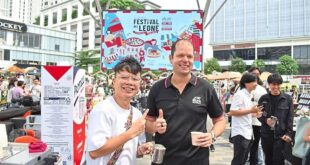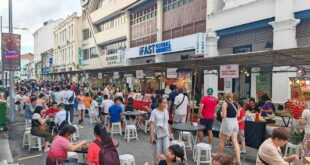MUCH has been said and written about Malaysians who resettle in another country in search of a better life, but there is another type of movement that occurs that is not as well-known.
Internal migration is when people move within a country’s borders either by relocating to another state (interstate migration) or within the same state (intrastate migration). In either scenario, the migration can occur from an urban to a rural area, or vice versa.
Malaysia’s development over the past decades has led many people to move from their kampung to towns and cities in search of better economic opportunities. This is typical of most developing countries transitioning from an agricultural base to a higher value manufacturing and industrial economy.
However, figures from the Department of Statistics 2022 Migration Survey Report show that urban to rural migration also happens and that the number of people involved in this type of migration has, in fact, picked up in several states over the past two years.
Reverse migration
According to the report, the rate of interstate urban to rural migration went up last year compared with 2020 in Johor, Kelantan, Meleka, Negri Sembilan, Sarawak
In the case of intrastate urban to rural migration, there has been an increase in numbers in Johor, Kedah, Kelantan, Melaka, Pahang, Penang, Perak, and Terengganu.
Accompanying a family member who gets a work transfer, and moving in search of better living environments and new job offers are the main reasons why people decide to resettle in another location within Malaysia, the report states.
When it comes to urban to rural migration, experts say cheaper housing, a lower cost of living, and major development projects in rural areas are the main factors driving urbanites to move to the countryside.
However, they say that internal migration trends in Malaysia can only be identified with greater certainty after studying the figures recorded over a suitably long period of time.
Universiti Putra Malaysia’s senior lecturer in sociology Dr Wan Munira Wan Jaafar says Malaysia appears to be showing signs of a reverse migration trend.
A lower cost of living and cheaper houses in rural areas are two reasons why this trend is happening.
At the same time, mega projects such as the refinery and petrochemical integrated development project in Pengerang, Johor, for instance, is attracting people to that rural area. And rural locations in Kelantan, Pahang, and Terengganu that are being developed into new townships are also attracting urbanites from cities.
“New townships such as Jengka, Muadzam Shah, Maran, Jeli and Gua Musang are among the best examples explaining the current trend of urban-rural migration,” she says.
Chai Sen Tyng, a senior research officer at Universiti Putra Malaysia’s Malaysian Research Institute on Ageing says urban to rural migration is greatly influenced by sub-urbanisation.
Sub-urbanisation is the setting up of new residential communities and townships on the outskirts of an urban area.
“In less developed states, this is usually linked to new agricultural activities or is a normal process of growth in rural areas.
“As a state’s population grows, so too will demand for new spaces which will result in villages gradually developing into towns and then cities,” he says.
Chai cites Perak as an example of how Malaysia’s development affects migration trends.
Movements in Perak have been driven by the fall in tin and rubber prices from the 1930s onwards as well as the fact that the state is located between two economic powerhouses, Selangor and Penang.
“From the richest and most populous state in colonial times, Perak has been a net-out migrant state for decades until 2000, when Kelantan topped the numbers,” says Chai.
Migration patterns are also fluid. Chai says this can be seen in how it has become less unusual to hear of a Kuala Lumpur resident considering leaving the city.
“It is a sure sign of displacement as people no longer find the place fit for family living and to raise children due to high housing prices and congestion,” he says.
Chai says job losses due to the Covid-19 pandemic lockdown that began in 2020 is one possible reason why many relocated from urban areas back to their rural hometowns.
“The urban-rural migration could be due to people deciding to relocate to their hometown to better care for and support families left behind due to the movement control order.”
He says the emergence of remote work due to the pandemic, added to cheaper housing in suburban areas that are well connected to highways and public transport, are added factors that might be driving the movement out of big cities.
“If the work from home and digital nomad trends pick up, we could see less congestion in big cities in the future.”
A potential positive
Sunway University professor of economics Yeah Kim Leng says urban-rural migration could enable development to be dispersed more widely throughout the country instead of being focused on increasingly congested cities.
“It will lead to increased economic activities and dynamism in the rural areas and smaller towns,” he points out.
The rising cost of living in urban areas is an important reason driving some urbanites to move to rural areas.
“It is indicative of weak income and wage growth in urban areas making it less affordable and attractive to live in higher cost urban areas.
“The government’s policy support for rural development could be creating more jobs and income opportunities in rural areas, thereby attracting low wage workers who have relocated to urban areas to return home,” he says.
Prof Yeah says that the negative factors in urban areas that are triggering an outflow of people need to be identified and the root causes addressed effectively with the appropriate policy initiatives and fiscal measures.
“It is also important to determine if the trend is transitory or permanent, as the latter may point to declining economic dynamism and competitiveness in urban areas.
“With the end of the Covid-19 pandemic and the pick-up in private investment activities, the urban-rural migration will likely ease as better paying jobs are created and urban inflation and cost of living subsides,” he says.
Prof Yeah says that the interrelated issues of low wages and higher urban living costs, coupled with the large pool of unskilled foreign workers present in most cities, will need to be addressed to ensure that the economic well-being of Malaysian cities is not compromised by a reverse migration trend.
Here to stay?
Universiti Putra Malaysia’s Wan Munira says the trend of reverse migration could continue in years to come due to several reasons.
One is because Malaysia is transitioning to an ageing society, where the older generation would prefer to live in more peaceful, less congested communities with less pollution.
Rising real estate and second home investments in rural areas will also encourage urban to rural migration in the future.
“It is also predicted that many even take early retirement to launch motels or homestay enterprises in scenic rural areas.”
She says the impact of urban to rural migration is positive towards eradicating poverty and overcoming regional economic imbalances.
“With more people migrating to rural areas, job opportunities are available in urban areas and the possibility of owning or renting a place to stay also increases.”
She suggests that new federal and state policies and incentives need to be created to promote a healthy migration from urban to rural areas.
“These could include programmes that help migrant workers find employment in rural agriculture, or exchange programmes that introduce urban youths to rural living,” she says.
 BeritaKini.biz Berita Viral Terkini di Malaysia
BeritaKini.biz Berita Viral Terkini di Malaysia





